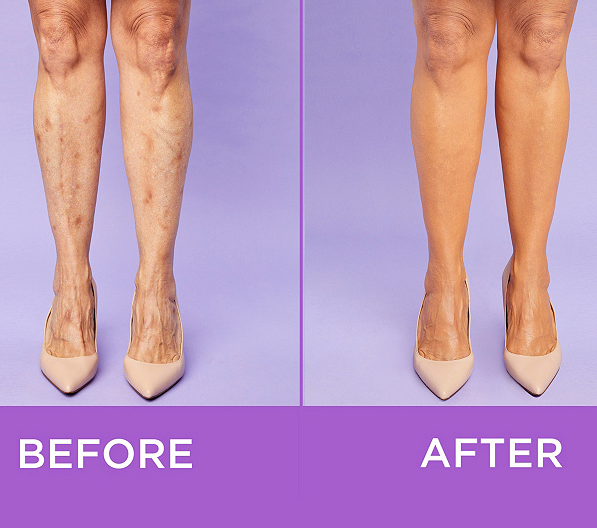
I have a chronic illness, Lupus Erythematosus (SLE). This autoimmune disease places me at a strong risk for heart attack and sudden cardiac arrest (cardiac events) and death.
To be specific, in 2021, The Lupus Foundation of America cited the science that showed “patients who have had lupus erythematosus for ten years, have a 3 to 4 times greater risk of cardiac events and death compared to people without lupus.”
This makes me very mindful of what can happen. But I have a secret strategy: I use heart rate variability or HRV to help keep me away from the risk of a heart attack or sudden cardiac arrest.
What Is HRV?
You might have heard about HRV, but you may not be sure what it is. So before I tell you how much tracking my HRV helps me with my lupus, let me cover what heart rate variability (HRV) is.
In my previous Sixty and Me article I talk about resting heart rate, another secret signal for you to have in your heart health toolbox.
Heart rate variability is different than resting heart rate. Heart rate variability measures the action between your individual heart beats. And the more action, the better.
Your HRV is kind of like a see saw or teeter-totter – the more it goes up and down the better it is. Lots of up and down movement shows that your heart action can bounce around and bounce back. In other words, you heart has no trouble responding to changing situations. Your heart is good at recovering quickly. Your heart is resilient.
And the opposite is true, a low HRV shows your body is less resilient and struggles to handle changing situations. When your HRV is low, your heart teeter-totter is not moving as well, or as quickly with ease. It is either heavy on one side or too light on the other. Things are out of balance. These things include your nervous system balance and your overall heart function.
One Single Measurement
Although I worked for years as a nurse in hospital critical care units, and as a nursing professor after that, until I started researching HRV for my book, Optimize Your Heart Rate, I had no idea what HRV was or why it mattered.
In critical care, nurses rely on the hospital bedside heart monitors to tell us how our patients’ hearts were doing. But these monitors are not set up to measure HRV. Many complex computations go into coming up with HRV, so it has mostly been used in research.
Researchers love the HRV metric because it measures your body’s stress physiologically and psychologically. Thus, stress in your body and stress in your mind is all captured in this one old research metric Heart Rate Variability. In other words, HRV measures your nervous system balance in your mind and body. A balanced HRV is a balanced teeter-totter moving up and down, quickly and with ease.
Quite simply, Heart Rate Variability measures the fitness of your heart and entire nervous system in one single number.
A Powerful Tool
This one measurement, HRV, shows you how you are responding to change in real time – on the spot as it is happening. No waiting for test results. It’s a snapshot of what is happening in your body right now.
This is a powerful tool and can be your secret signal that something is up with your body and mind, even though you might not be aware of it otherwise.
In medical terms, HRV measures your nervous system balance between your sympathetic and parasympathetic autonomic nervous system – speedy side (fight/flight/freeze) and parasympathetic (rest and digest). This is the same nervous system that controls your breathing, your heart beat, and your digestion without your awareness. This all just happens below your level of consciousness.
Low HRV in Lupus Patients
Now back to my chronic illness and heart risk. Lupus erythematosus patients often have low heart rate variability. In my book, Optimize Your Heart Rate, I cite Matusik, who in 2018 led a large systematic review (a study of lots of studies) to show that many lupus patients have low HRV.
The conclusion of the study showed HRV is not so much an indicator of where the disease process is at for the lupus patient, but where the state of inflammation is, at this particular point in time. And this finding is what makes it generic and applicable to you.
What Else Is HRV Useful For?
So even though you probably don’t have lupus, taking your HRV can help you to know if you are about to get sick, before you actually get sick. Specifically, the study of studies says that “this low HRV is related to the inflammatory cytokines, rather than the disease process.” This means that your HRV can often tell you when you have inflammation or an infection.
I am looking forward to my upcoming interview with Dr. Patrycja Matusik to discuss this publication on my podcast Your Outside Mindset.
Even if you have no infection or chronic diseases at this time, heart rate variability can be your heart attack early warning alarm too. In my book I cite a huge study of 22k people in the Netherlands which showed “that low HRV is indicative of first heart attack or sudden cardiac arrest (SCA) in those without diagnosis of heart disease. Specifically low HRV increased likelihood of SCA or heart attack by 40%.”
In case you missed that: low HRV is an early warning system for heart attack and sudden cardiac death. And this is in over 20 thousand people who have no diagnosis of heart disease. So, this could be you or me.
And even if you have no diseases, as you age, your HRV gets lower.
Through doing extensive research for my book, I found out that not only is a low HRV a warning alarm for heart malfunction, it is, according to growing evidence, also indicative of a range of other diseases.
How to Take the HRV Measure Yourself
The good news is that today HRV is something super simple for you to track. HRV is a helpful measurement that you can take very easily every day.
Now, I like to practice what I preach, so I keep track of my heart rate variability. I put on a chest strap each morning around the same time. It takes only a minute. I cue it to my HRV app, standing up always, and I usually do this outside looking into the branches of my old oak tree.
My app shows me my resting heart rate and my heart rate variability. After a minute I get a score from 1-10. When I am at 10, this is when I am in total balance. About once or twice a month my HRV is between 2 and 4. The app tells me to rest/recover and that I might be experiencing early signs of illness or an immune response.
I am either too high on the speedy sympathetic side and I can’t slow down, or I am on the opposite side, feeling really tired on the slow parasympathetic side. So, I can see my nervous system go out of balance through my morning minute-long HRV practice.
My Secret Signal
The reason that HRV is my secret signal (even to myself) is that I can’t usually tell if I am stressed. It is usually not until I get outside into green space that I let out a sigh and realize that I have been feeling tense about something.
Since I know through the writing of my first book, Take Back Your Outside Mindset: Live Longer, Stress Less and Control Your Chronic Illness, being outside in greenspace balances the nervous system, I make sure I go outside to see, sniff, and lean up against the trees. I just stroll around in green space. The next day I am back to 8, 9, or 10. This works. For me.
HRV is a helpful and objective way of managing my days with lupus. I feel like I know what is going on, and I am careful to get the rest and greenness I need to recover. I have my own secret signal and my own treatment plan for recovery: time in greenspace, often doing absolutely nothing.
If you are interested in learning more about heart rate variability please check out my book Optimize Your Heart Rate: Balance Your Mind and Body With Green Space.
Let’s Have a Conversation:
Would you consider using HRV as your secret signal to keep you in better health? Do you use or are you interested in using green space as your recovery plan to help you to manage your health? Do you track your resting heart rate as another of your secret signals to keep you in better health?





